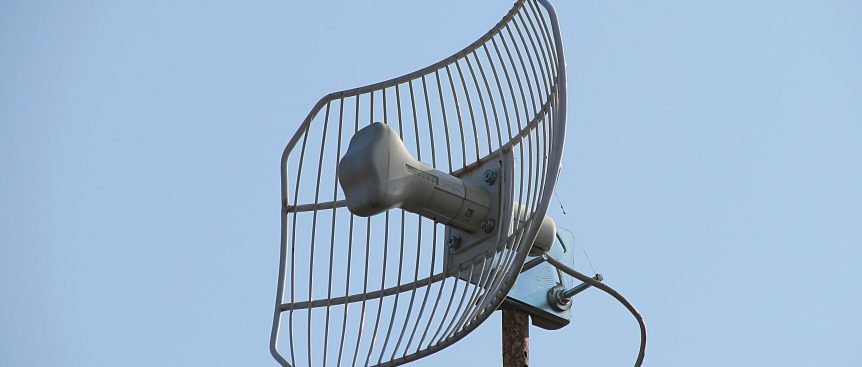They come in all shapes and sizes. They are specific for each wireless communication purpose. Yet they are so often mis-understood.
In the basic form, how an antenna works is always the same. Each manufacturer then enhances the design to improve on performance. But I am sorry to say, that if you now intend to build your own antenna, you will have to dig into each fundamental component, frequency, waves, gain, bandwidth, impedance… polarization…
Here we will simply go across the ideas, so that when you next place that Wi-Fi in the deckhead, or the vhf antenna out on the flybridge… you know which way to point it!
In the most basic form, an antenna is a piece wire that is cut to a specific length (depending on the frequency). And here the important bit! The wire radiates out sideways from it, meaning perpendicular to that wire, never in the direction of the wire!
So, if you hold that wire vertically up, the signal radiates horizontally out. Remember this, as this is the first mistake many people make, believing that if they point the antenna in the direction they want to transmit (think of that antenna sticking out of the top of the vhf handheld radio), in fact you are doing the opposite!
The variations come in the antenna design when you start putting parallel wires and a shield or an electrical mirror on one side. This is what happens in directional antennas. These antennae visually often already have a difference. Think about the TV antenna on top of the house, that points in a particular direction. When you look closer, you will note that the “wires”, often tubes in this case are still perpendicular to the direction the antenna is pointing, just multiples of them. Putting multiple “wires” in parallel has to do with the waves the antenna creates to transmit. Just like the waves you see on the surface of the sea; radio waves also travel in undulations in the direction of where the signal goes. Cross those waves with another set of waves and, like on the sea, the waves get bigger or smaller as they build on each other or null each other out.
As these parallel wires transmit, they do exactly that, build on each other in one direction, and null each other out in the other direction!
Now place an electrical mirror behind the antenna, i.e. on that TV antenna the square construction behind it, or the satellite antenna, that wok dish behind that focal point on the end of the arm sticking out in front. Again, like the shore does to waves, making them bounce back, and creating those huge waves, this shield does the same to radio waves.
Thus, its important to remember that a simple pointy stick antenna, with nothing more around it, 99% of the time should be held proudly upright in a vertical way, to get the most signal transmitting in a horizontal path, equally in all directions. Distance you ask? Well, like your ability to see visually… the higher you go, the further you can see, is there an obstruction in the way, yes it will obstruct radio waves as well.
How much does a metal wall obstruct radio waves?, It does depend on the frequency and signal strength. But again, think of that human voice that shouts from the other side of the wall. It is not only the volume that they are shouting at, but you have that high pitch voice, that actually seems to be less clearer than the deep throated voice?, or that person who has mastered to speak super clearly, over the other who mumbles their words, and you already have difficulty understanding them when you’re face to face, let alone when they try and talk to you from across the gangway!
Wi-Fi antenna that are inside the case, and you cannot see the actual antenna? This is difficult, but here do read the mounting instructions that came with the unit. If the Wi-Fi box is designed to sit on a desk, it is most likely that the antenna is vertical inside when stood upright… lying it down on its side, or putting it sideways on the bookshelf, between some books, may significantly decrease its performance. Same goes for the ceiling mounted antenna, whose idea is to point downwards at the smart phones below, opening the ceiling and simply putting the unit upright on top (i.e. upside down to its recommended mounting position) actually causes the signal to go up, instead down to where you want it!!
Antennas can be tricky and making them perform the way you want them to often simply has to do as to how and where you mount them. Put two equal antennas beside each other, and you cause interference. Please them in a nicely protected and visually pleasing enclosure… and you decrease their performance…
Give it a bit a thought, and I’m sure you will make big gains!
This article was written by Tim Gorter, teletechnics.com. Teletechnics provides full shoreside support to Superyacht engineers and ETO’s, providing remote monitoring as well as specialising in troubleshooting and analytic maintenance. Join the workshops organised in Barcelona during the winter months, more on teletechnics.com


